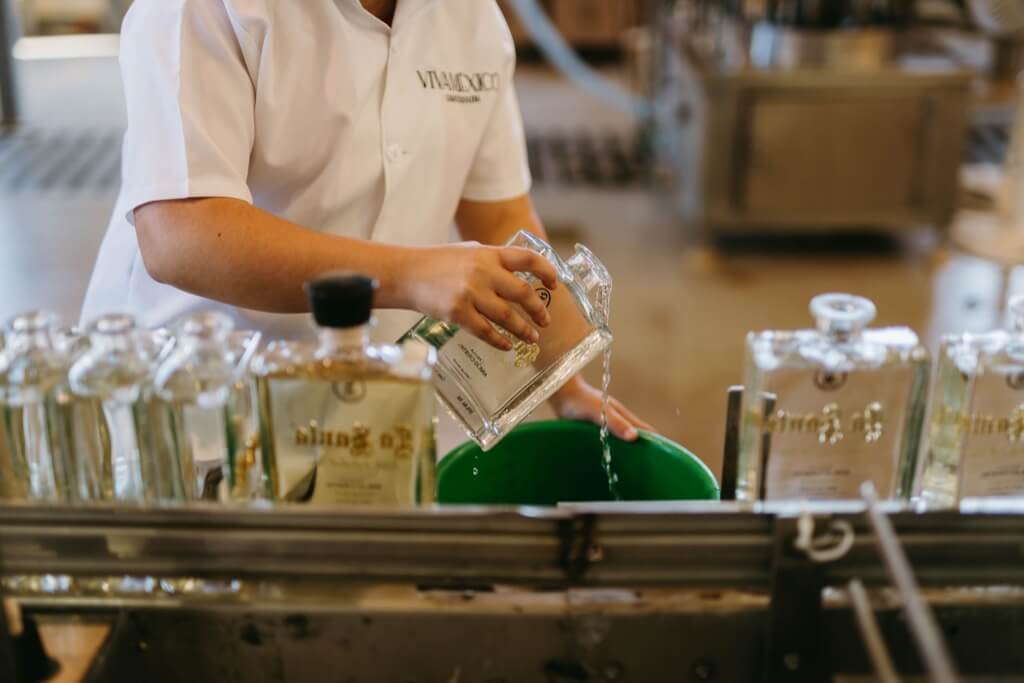Have you ever ordered your favorite tequila and noticed a subtle change in its flavor from one batch to the next? Don’t worry; you’re not alone. Like wine, tequila is a natural product that is subject to a variety of influences, including agave varieties, seasons, aging barrels, and even minor changes in the production process. While these fluctuations are entirely normal for a naturally-made spirit, they have raised questions about transparency and consumer expectations in the tequila industry.
“Customers care about color and flavor remaining the same for most brands,” says Zack Romaya of Old Town Tequila in San Diego. Customer complaints can result from a change in flavor perception, highlighting the difficulty tequila producers face. While naturally made tequila can maintain about 95% consistency between batches, achieving that level of identicality often requires the use of additives.
Additives like caramel colorant, oak extract, glycerin, and sweeteners have become common ingredients in some tequila recipes. These additives can be used to adjust the color or flavor of tequila when aging barrels no longer provide the desired characteristics. However, this practice raises an essential question: should tequila remain strictly uniform, or is there room for producers to embrace the natural evolution of this spirit over time?
Carlos Camarena, Master Distiller of Tequila Ocho, believes that true consistency lies in the quality of tequilas rather than making them identical every time. “This is nature,” he emphasizes. “We make the most of what we have.” Tequila Ocho and other producers choose to showcase production variances, such as using different agaves and producing tequilas at different times of the year. This approach provides consumers with the understanding that tequila can naturally vary from batch to batch.
There Needs to Be Transparency In Production

Some tequila producers, like Camarena and Tequila Fortaleza, take transparency to another level.
Prominent Display of Agave Source:
- Tequila Ocho emphasizes transparency by prominently displaying the specific ranch from which the agaves are sourced on its label. This practice allows consumers to know exactly where the raw materials for their tequila come from. By providing this information, Tequila Ocho establishes a direct link between the agave source and the product, enhancing consumer trust.
Handwritten Lot Numbers:
- Tequila Fortaleza takes transparency to another level by including handwritten lot numbers on each bottle. These lot numbers serve as a unique identifier for each production batch. Importantly, they indicate the exact production date of the tequila in that particular bottle. This practice allows consumers to track and trace the origin and age of the tequila they are enjoying, creating a deeper connection to the product.
These practices serve multiple purposes:
- Consumer Trust: Displaying the agave source and including handwritten lot numbers instills a sense of trust in consumers. They can see that the producer is willing to provide concrete information about the product’s origins and production timeline, reinforcing the authenticity of the tequila.
- Quality Assurance: Handwritten lot numbers also assist in quality control. If a consumer particularly enjoys a certain batch, they can refer to the lot number for future purchases, ensuring a consistent and satisfying experience.
- Educational Value: These practices contribute to consumer education. By showcasing the agave source and production date, consumers gain a deeper understanding of the craftsmanship involved in tequila production. They can appreciate the uniqueness of each batch and the artistry behind it.
- Collectibility: Handwritten lot numbers can make bottles of Tequila Fortaleza more collectible. Enthusiasts may seek out specific batches or vintages, creating a sense of exclusivity and desirability in the market.
These practices allow consumers to connect with the tequila’s origin and appreciate the subtle differences between batches.
Billy Erickson of Tequila Fortaleza’s marketing department explains, “Each batch turns out with a slight variation, which is natural.” Such variations spark discussions among tequila enthusiasts about their favorite lots and why they prefer them. For example, the añejo lot 42/43 has become famous, showcasing how consumers embrace and even suggest which variations to replicate.
Challenges in Educating Consumers about Tequila Production
Educating consumers about the intricacies of tequila production remains a challenge. Many distilleries strive for uniformity, assuming it’s what customers desire:
These challenges encompass various aspects that require careful consideration and innovative approaches:
Assumption of Uniformity:
- One of the primary challenges lies in the assumption that consumers prefer uniformity in their tequila. Many distilleries believe that maintaining consistent taste and characteristics across batches is what customers desire. This assumption can lead to reluctance to embrace the natural variations inherent to tequila production.
Consumer Expectations:
- Consumers often have preconceived notions about what a product should be like, especially when it comes to well-known brands. Educating consumers to appreciate the subtle differences in tequila batches can be challenging when they expect every bottle to taste identical.
Lack of Consumer Awareness:
- The intricacies of tequila production are not widely known among the general public. Many consumers may not even be aware of the factors that contribute to variations in tequila flavor and quality. Bridging this knowledge gap is a crucial aspect of education.
Overcoming Language Barriers:
- Tequila production terminologies and processes can be intricate, and language barriers may exist, particularly when trying to reach international markets. Effective translation and communication become essential to ensure consumers understand the details.
Cultural Perceptions:
- Cultural perceptions surrounding tequila can also pose challenges. For example, some consumers may view tequila as a straightforward, consistent spirit, influenced by stereotypes or limited exposure to artisanal variations.
Balancing Tradition and Innovation:
- Educating consumers requires striking a balance between honoring traditional tequila-making methods and embracing innovative practices that allow for quality control and transparency. Finding this equilibrium can be a delicate task.
Consumer Skepticism:
- In an era of marketing and brand messaging, consumers may approach educational efforts with skepticism. Building trust and credibility in the information presented becomes vital to overcome consumer doubts.
Sensory Education:
- Teaching consumers to discern the subtleties of tequila flavor profiles, aromas, and aging nuances can be challenging. Developing sensory education programs and materials is essential to help consumers appreciate the art of tasting tequila.
Cultivating Appreciation for Variations:
- Encouraging consumers to not only accept but also appreciate the natural variations in tequila batches is a significant hurdle. This involves shifting the perception of these variations from flaws to unique characteristics.
Customized Educational Strategies:
- Different consumer segments may require customized educational approaches. Enthusiasts seeking in-depth knowledge may benefit from detailed resources, while casual consumers may prefer simplified explanations.
Promoting Transparency:
- Transparency in production practices is a key element of consumer education. Demonstrating how producers embrace variations while maintaining quality can help consumers understand and value these aspects.
Consumer Feedback Loop:
- Establishing a feedback loop where consumers can share their experiences and preferences is crucial. Producers can use this feedback to refine their educational efforts and product offerings.
However, Romaya emphasizes the importance of educating consumers about the manufacturing process and the reasons behind predicted discrepancies.
Ricardo Lona Martínez, Director of Operations for Codigo 1530, highlights the uniqueness of their Rosa blend, which can vary in hue from light pink to dark pink due to wine barrels imparting distinct flavors. To prevent confusion, they use colored bottles to differentiate Rosa from Reposado. Martínez believes that Rosa is more of a journey than just a color.
While the move and need for uniformity remains a common goal for many distilleries, it’s essential to remember that tequila, as a natural product, possesses a distinct profile with each batch. Master Distiller Carlos Camarena of Tequila Ocho reminds us that true consistency lies in the quality of tequilas rather than making them the same every time. The subtle variations in flavor and character are what make tequila a dynamic and ever-evolving spirit.
